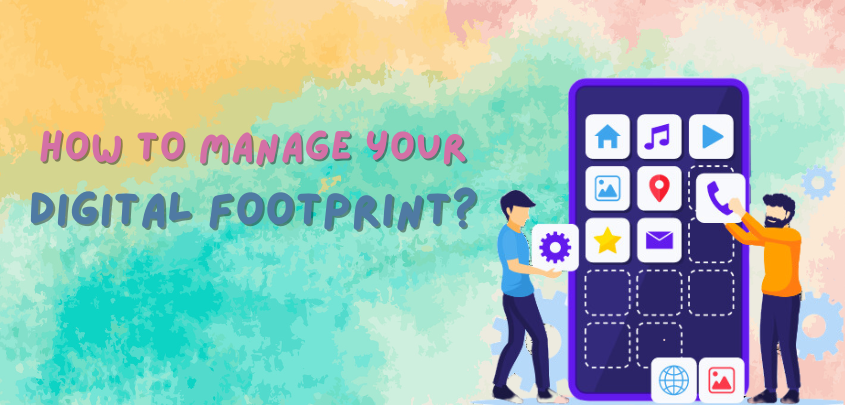
13, Jun, 2024
How to Manage Your Digital Footprint?
How to Manage Your Digital Footprint?
In today’s digital world, our online activities leave traces that others can track and access. Your digital footprint is this collection of information that can have a big impact on your security, privacy, and even reputation. Fortunately, you can take numerous steps to manage your digital presence.
Search for yourself online.
Begin by conducting an online search for your name using search engines such as Google, Yahoo. This allows you to see what information is publicly available about you. Examine the first few pages of results and be prepared to see unexpected, perhaps sensitive, or outdated information. If you come across any content that you wish removed, reach out to the site administrator and request it be removed.
Strengthen privacy settings
Most online services, such as social media, email, and web browsers, provide privacy options that let you manage who sees your data. To reduce the size of your digital footprint, change these settings to be more restricted. However, keep in mind that enhancing security may have an impact on site usability, such as requiring more frequent logins or missing customized advertisements.
Be cautious on social media.
Even with increased privacy settings, be cautious about what you post on social media. Avoid taking surveys that ask for personal information, and exercise caution when sharing images or updates that expose too much about your life. Once shared, your information can be re-distributed without your permission, making it difficult to manage who views it.
Limit mobile app permissions.
Numerous smartphone apps ask to access personal information including contacts, location, and camera. Be cautious about providing these permissions. Review app permissions on a regular basis and revoke access to data that is not required for the app to function properly.
Reduce online accounts.
Your digital footprint grows as you add additional online accounts. Delete or deactivate accounts that you no longer use to reduce your digital footprint. When creating new accounts, examine whether it is necessary or if you may use guest checkout to avoid building more profiles.
Make use of a password manager
Using a password manager makes it easier to generate and keep secure, one-of-a-kind passwords for all of your online accounts. This not only increases security but also decreases the effort of remembering different passwords. Enable Multi-Factor Authentication (MFA) for enhanced protection on your most critical accounts.
Exercise caution with linked accounts.
Certain services enable you to log in using a different account, such as Google or Facebook. Convenient as it may be, linking numerous accounts and exposing more of your data can make you more vulnerable. Weigh the convenience against the potential privacy violations.
Always Update Your Software
Update the software on your computer, browser, apps, and antivirus program on a regular basis. Updates frequently include security fixes that protect against vulnerabilities and lower the risk of cyberattacks.
Enable Private Browsing Mode
The majority of online browsers have a private or incognito mode that stops cookies and browsing data from being saved. If you wish to keep your internet activity private, use this mode.
Avoid Using Public WiFi for vulnerable Work
Hackers can target public Wi-Fi networks, which are less secure. Avoid making financial transactions or accessing critical accounts via public networks. When using public Wi-Fi, utilize a Virtual Private Network (VPN) to secure your connection.
By implementing these strategies, you can significantly enhance your privacy, security, and control over your online presence.
